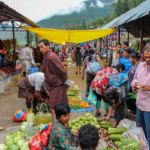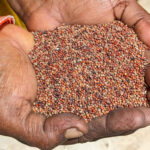Tag: Agricultural Transformation, Food Systems & Nutrition Transition

Key Takeaways from TCI’s Report on Food, Agriculture, and Nutrition in South Asia
Late last year, TCI published a report examining the state of food systems in South Asia. Part of a series produced by the Institute, Food, Agriculture, and Nutrition in South Asia: Building Healthy, Sustainable Food Systems (FAN-South Asia) explores trends…

Panel to Explore South Asian Food Systems
A panel of experts from Cornell University will explore the trends and challenges facing South Asian food systems at a special event launching the Tata-Cornell Institute’s new report on Food, Agriculture, and Nutrition in South Asia on Thursday, April 18,…

New Book Charts a Novel Course for India’s Social Safety Nets
With a growing economy and increasing clout on the world stage, India is a success story among developing countries, but persistently high poverty and malnutrition rates threaten to leave millions of lives behind. A new book authored by researchers at…

The Future of India’s Social Safety Nets: Focus, Form, and Scope
India’s rapid economic growth and wealth creation in the past three decades have been marred by its persistently high levels of poverty and child undernutrition, along with rising inequality. Social safety nets, for those left behind, have therefore gained in eminence as a redistributive mechanism....

Coordinated Action Is Needed to Solve South Asia’s Malnutrition Puzzle
With hunger again on the rise across South Asia, a coordinated approach that aligns activities on the local, national, and international levels is needed to address the region’s malnutrition challenges, according to a new report from the Tata-Cornell Institute for…

Food, Agriculture, and Nutrition in South Asia: Building Healthy, Sustainable Food Systems
TCI’s report on Food, Agriculture, and Nutrition in South Asia: Building Healthy, Sustainable Food Systems (FAN-SA) examines trends in nutrition, agriculture, and food consumption in Afghanistan, Bangladesh, Bhutan, India, Maldives, Nepal, Pakistan, and Sri Lanka, offering a range of policy instruments for improving nutrition outcomes...

Millets Make Sense for India’s PDS
Replacing some of the rice provided through India’s Public Distribution System (PDS) could lower the costs associated with the subsidized food program by $770 million, according to new research from the Tata-Cornell Institute for Agriculture and Nutrition (TCI).
In a…

Promoting Millets in the Public Distribution System
This special policy brief provides cost-saving estimates associated with the potential introduction of millets into India’s Public Distribution System (PDS), which provides subsidized food to more than 800 million people. This analysis provides policymakers and other stakeholders with valuable information that can be used to...

TCI Director Delivers Lecture on Food Insecurity in South Asia
Prabhu Pingali, director of the Tata-Cornell Institute for Agriculture and Nutrition (TCI) delivered a virtual seminar hosted by the South Asia Section of the Agricultural and Applied Economics Association (AAEA) on October 25. The seminar was entitled, “How to Fight…

Plant-Based Meats May Not Measure Up for the Developing World
Is your burger made of beef or pea protein isolate mixed with coconut oil? As efforts to stop climate change ramp up, increased attention is being given to swapping out meats and dairy items for plant-based alternatives designed to replicate…

